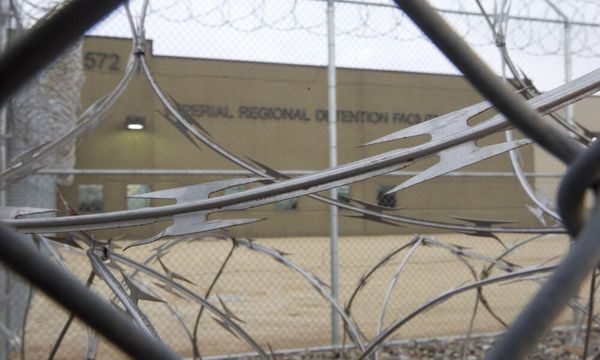A new era in commercial space travel launched from Kennedy Space Center on Friday.
The Axiom Space mission to send the first-ever all-civilian crew for a stay on the International Space Station lifted off from Launch Pad 39-A at 11:17 a.m. on board the SpaceX Crew Dragon Endeavour.
On board the AX-1 mission is Axiom employee and former astronaut, Commander Michael López-Alegría, who has plenty of space experience having flown three shuttle missions and lived on board the ISS for 215 days. He’s guiding three rookies — Larry Connor, Mark Pathy and Eytan Stibbe — who each paid Axiom Space $55 million for the 10-day mission.
The four woke up before 3 a.m. Friday, donned their suits and made their way to the launch pad after 8 a.m. They took their seats and performed communication checks with just under 2 1/2 hours before liftoff. With less than an hour before launch, the crew was “go for launch.”
“Loud and clear, godspeed today fellas, let’s go have some fun,” announced mission control.
The booster is making its fifth flight having previously been used on the orbital civilian flight Inspiration4 last fall. SpaceX will attempt to land it on its droneship A Shortfall of Gravitas in the Atlantic Ocean.
Crew Dragon Endeavour is making its third flight having previously taken NASA astronauts to the ISS on the Demo-2 and Crew-2 missions.
“Axion Space was was really formed to make space more accessible to everyone,” said company president and CEO Michael Suffredini. “This really does represent the first step where a bunch of individuals who want to do something meaningful in low-Earth orbit that aren’t members of a government are able to take this opportunity.”
While the ISS has hosted civilians in the past, the Axiom mission looks to redefine the purpose behind the mission. It’s the first of four flights it wants to make to the ISS ahead of its larger-scale plan to build out its own commercial space station.
“The ISS is a wonderful vehicle that is sort of restricted to 15 countries and the five agencies that represent them, and to some degree, the research institutions that are sort of plugged into them.” López-Alegría said. “What we aim to do is democratize that process to make it a very level playing field so that research entities from all over without necessarily a certain pedigree can present those things on a clean sheet of paper and have better possibility of getting into the microgravity environment.”
Axiom Space won a NASA contract to begin sending up modules to the ISS beginning in late 2024. In successive years, added modules will have their own life-support system, sleeping quarters and research areas able to support eight people outside of the NASA, European Space Agency and Roscosmos crews.
Once the ISS nears the end of its operational life, currently targeting 2030, the Axiom modules will separate and become their own standalone space station.
It’s one of three commercial stations in the works with NASA funding. The other two in planning stages are called Orbital Reef, a combined effort of Blue Origin, Sierra Space, Boeing and others; and Starlab, coming from Nanoracks, Lockheed Martin and Voyager Space.
Axiom, though, is using its civilian flights starting with AX-1 to pave the way starting Friday.
“That’s our business plan,” Suffredini said. “We think it does put us in a good place relative to the competition, but we’re happy that there are others that are going to help us grow the LEO economy along the way.”
The four passengers of AX-1 have walking orders to not dawdle during their time on the station.
They have 25 experiments that will take 100 hours of research time as well as public outreach planned. The experiments were corralled from the passengers’ relationships to various science and technology organizations that interested them as well as assignments from NASA, the International Space Station U.S. National Laboratory as well as some technological hardware testing for Axiom Space’s future plans.
“The whole idea of these missions was to give individuals, countries and companies other opportunities to be able to utilize ISS and ultimately do more and more in space,” Suffredini said, noting the sundry applications of microgravity from everything to 3-D printing organs to creating metal alloys that he said are “so far superior to their cousins on the ground.”
“All of these applications are opportunities, and our job is to create the environment and give the access so that when people have a good idea, they know they have a place to go and a way to implement it,” he said.
Suffredini, who spent 10 years as NASA’s ISS program manager until his retirement in 2015, sees the mission as a precursor to a more “grandiose” vision of the future.
“Our job is to grow the number of countries that are working together in low-Earth orbit, and let them together explore beyond low-Earth orbit,” he said. “We talked a lot about the applications and the utilization of microgravity environment, but really deep down this is about pulling us together as 200 and whatever countries that we are today. It’s about pulling us all together, and this human spaceflight is a unique opportunity to do that.”
____







